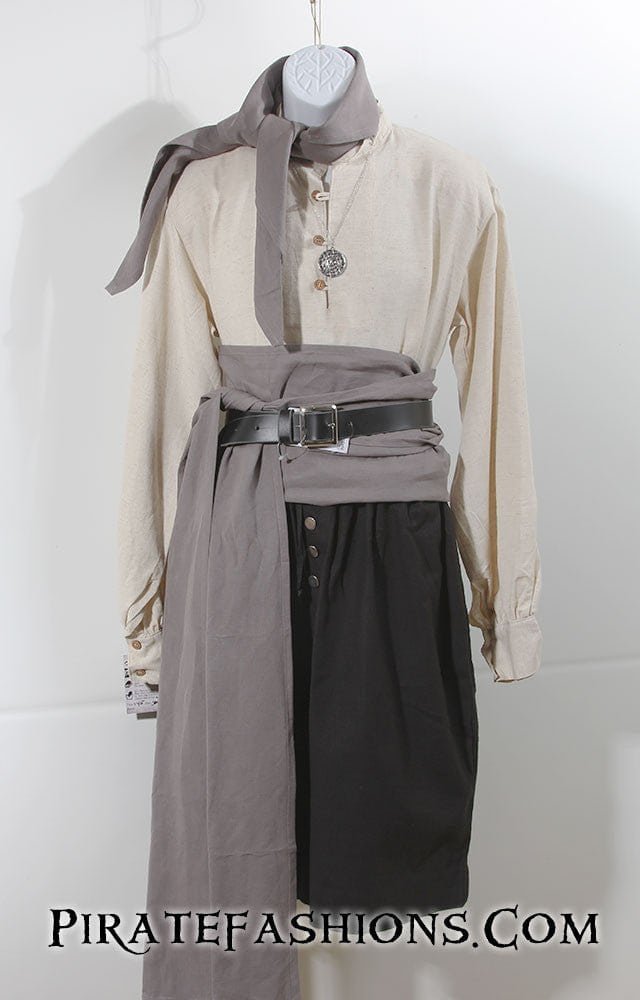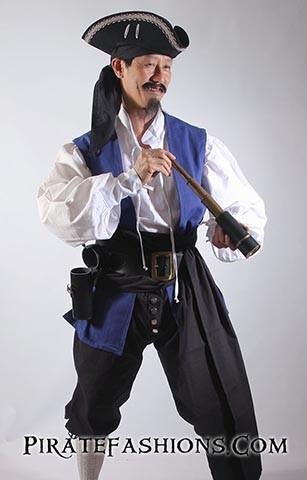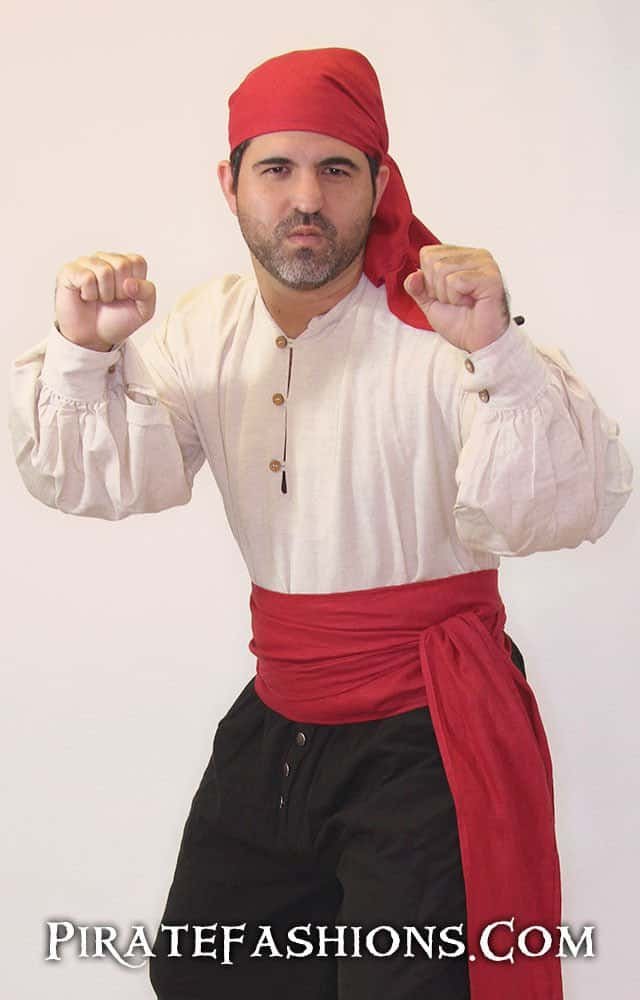Physical Address
304 North Cardinal St.
Dorchester Center, MA 02124
Physical Address
304 North Cardinal St.
Dorchester Center, MA 02124

Delve into the iconic and practical world of pirate fashion from the Golden Age, exploring clothing, accessories, myths, and cultural influences shaping sea rovers' style.
Have you ever wondered what made pirate attire so distinctive and emblematic of their adventurous way of life? Pirate fashion during the Golden Age of Piracy was more than just a strategic blend of practicality and flamboyance. This intriguing aspect of pirate culture offers a glimpse into not only their lifestyle but also the societal norms of the 17th and 18th centuries. In this article, you’ll dive into the world of sea rovers, exploring their clothing and accessories that are as legendary as their high-seas exploits. We’ll uncover the practicality of their garments, the symbolism behind their iconic looks, and some of the misconceptions popularized by literature and film.
Throughout history, pirates have captured the imagination of many. Whether through the pages of classic adventure novels or the thrilling scenes of Hollywood blockbusters, their fashion has remained a fascinating topic. From the rugged simplicity of a pirate shirt to the intricate designs of their tattoos, each piece tells a story of its own. Let’s sail back in time and take a closer look at how these fearless adventurers dressed.

Pirate fashion cannot be fully appreciated without understanding the culture and lifestyle that fostered it. The clothing choices of pirates during the Golden Age were often influenced by practicality, the diverse cultural influences of the seas they traveled, and the economic realities of being outside the law.
The Golden Age of Piracy, approximately spanning from 1650 to 1730, was a time when piracy flourished in the Caribbean, along the American eastern seaboard, the West African coast, and even in the Indian Ocean. Pirates were typically outlaws who rejected the norms of the traditional society. Their fashion reflected a blend of rugged individualism coupled with elements picked up from different cultures and seafaring nations they encountered.
For pirates, clothing was not solely about style. It was about survival and adaptability. Your clothing was an essential part of life at sea, needing to withstand the harsh marine environment while providing mobility and comfort. This emphasis on practicality influenced many of the clothing items favored by pirates.
In understanding pirate attire, you must consider each element from head to toe. The clothing varied from one pirate to another, influenced by personal choices, the ships they plundered, and the geographical regions in which they operated. Let’s delve into some key items of pirate clothing and their significance.
Pirates are often depicted with tricorn hats, but how historically accurate is this image? The tricorn, indeed, became popular in the late 17th century. However, not all pirates donned such hats. Practicality often led them to choose bandanas or simple headscarves that could protect their heads from the sun or rain, and were easy to secure in a scuffle.
The shirt was a staple for any pirate. Made from durable materials like cotton or linen, shirts were loose-fitting to allow maximum movement and were often white or neutral because dyes were expensive and had to withstand rough conditions.
Pirate trousers typically prioritized function over form. Trousers were often short, ending just below the knee. This was practical for climbing the ship’s rigging or wading through water.
The devil, or in this case the sea rover, is in the details. Accessories were not only for flair but served various utilitarian purposes.

Pirate fashion didn’t develop in isolation. The evolution of their clothing was influenced by a mix of factors, including their own rebellious nature and the multicultural interactions they had as they sailed.
Pirates encountered a spectrum of cultures across the seas, which reflected in their clothing. They were influenced by the styles of sailors from Spain, England, France, the Dutch, and African cultures, among others. This amalgamation resulted in a distinctive pirate style that was both functional and highly varied.
Pirate clothes were more than mere garments. They were a statement of identity. The ostentatious aspects of pirate fashion, such as flamboyant hats or colorful sashes, were often meant to signify riches taken from their conquests or to intimidate foes by portraying an unconcerned opulence.
Pirate fashion is often romanticized in popular media, thanks to books like “Treasure Island” and movies such as “Pirates of the Caribbean.” This portrayal has led to common misconceptions—such as thinking all pirates wore eye patches or that every pirate captain dressed like Captain Hook. In reality, pirate attire was diverse and often utilitarian, adapting elements from many different cultures and influencing pop culture in a hyperbolic representation of their original fashion.
In the representation of pirates over time, many myths about their attire have evolved. Let’s clarify some misconceptions to paint a more accurate picture.
The Hollywood image of all pirates wearing tricorn hats isn’t precisely accurate. While some captains might have worn such hats, ordinary pirates were more likely to wear bandanas or headscarves due to their practicality.
Not all pirates dressed alike. In fact, what a pirate wore was largely influenced by what was available from captured ships or in the ports they docked. They took advantage of whatever resources they had, leading to varied and highly personalized attire among crews.
Certain pirate accessories like hooks or wooden legs gained mythic status due to their recurrence in stories and tales. Most pirates preferred keeping their remaining limbs intact, and prosthetic hooks were not as common as narrative tricks would have us believe.

Pirates wore bandanas for practical reasons—primarily protection from the sun and sweat management. Bandanas were also easily secured during the chaos of battle or adverse weather at sea, which made them a convenient option.
There is a belief that some pirates wore eye patches to keep one eye adjusted to night vision, although it is more likely contributed to mythology. The stereotype of the eye-patched pirate is more rooted in fiction than widespread historical practice.
Pirates acquired their clothes from a variety of sources, including stolen goods from plundered ships and markets in exotic locations they visited. This led to a wide range of clothing styles reflecting the diverse cultures that pirates encountered.
Yes, pirates often used tattoos for symbolism. They were seen as talismans, marks of identification, and memories of the places they traveled or significant events.
While many pirates did wear earrings, it was not universal. Earrings were commonly believed to have superstitious value, such as acting as amulets for warding off bad luck or paying for a proper burial should they die at sea.
Exploring pirate fashion provides a fascinating window into the Golden Age of Piracy, revealing a blend of functionality, multicultural influences, and the pronounced personality of sea rovers. Rather than the theatrical uniformity often depicted in films and books, real pirate attire was diverse, influenced by necessity, plunder, trade, and the colorful melange of cultures encountered on the high seas.
Pirates were more than the clothes they wore; they were products of their time, their influence reaching far beyond their clothes. Through their expressive fashion, they became symbols of resistance against established norms, embodying the risk and reward of maritime life outside the law. As you continue your journey into pirate history, consider how their practical, yet legendary, attire tells the story of these iconic figures, shaping both historical record and popular imagination.
